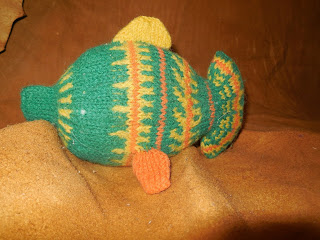Every time someone sees one of my a finger woven projects I am asked the same questions. "How did you learn to do that? Who taught you?" These are simple questions, but the answer to them are never quite so simple. If I am honest, I say, "I really don't know," and then I get an interesting yet varying array of looks.
 But the truth is, I really don't know. I braided horse manes, my hair, cords, and yarns, and even did Macramé as a kid growing up. Somewhere in that mix up maybe I learned, but I don't ever remember doing a project with it. When my husband brought me one of his first braintan hides, placed it in my hands, and asked, "what do you think of this?" I replied that I would love to braid with it.
But the truth is, I really don't know. I braided horse manes, my hair, cords, and yarns, and even did Macramé as a kid growing up. Somewhere in that mix up maybe I learned, but I don't ever remember doing a project with it. When my husband brought me one of his first braintan hides, placed it in my hands, and asked, "what do you think of this?" I replied that I would love to braid with it. After actually braiding the leather, doing some research, and showing it to others, I realized what I was doing was called fingerweaving. I searched out and bought several books on the subject and through them, I've studied how others do it. The resources share that in Canada, many years ago, they secured the strands at both the top and the bottom before braiding. Curiosity about this drove me to connect with a fingerweaver in Canada and ask if he did it this way. His answer was yes. Hmm... that is not how I do it.
After actually braiding the leather, doing some research, and showing it to others, I realized what I was doing was called fingerweaving. I searched out and bought several books on the subject and through them, I've studied how others do it. The resources share that in Canada, many years ago, they secured the strands at both the top and the bottom before braiding. Curiosity about this drove me to connect with a fingerweaver in Canada and ask if he did it this way. His answer was yes. Hmm... that is not how I do it. After reading another book, the author's way sounded so complicated that I gave it a half-hearted try, then shook my head, and went back to my way since the results look the same. There are still a few books out there on fingerweaving that I would like to buy because they are not something my local library carries. However, I am not sure just when or if I will pick them up. I can get good results fingerweaving, so I am always pulled to buying books on other subjects that interest me first. Somehow, I always run out of that green paper stuff that people want in payment for their books, before I run out of books on my bucket list.
After reading another book, the author's way sounded so complicated that I gave it a half-hearted try, then shook my head, and went back to my way since the results look the same. There are still a few books out there on fingerweaving that I would like to buy because they are not something my local library carries. However, I am not sure just when or if I will pick them up. I can get good results fingerweaving, so I am always pulled to buying books on other subjects that interest me first. Somehow, I always run out of that green paper stuff that people want in payment for their books, before I run out of books on my bucket list.The books have helped me stretch and reach out to try different patterns other than the basic diagonal fingerweave which comes so naturally to me and is my favorite to do. But some of the other patterns look cool enough that they are worth the effort.
The following are a few pictures of some of the many different things I have fingerwoven. I tend to have my own style, and often mix leather with wool or braintan leather with bark tan leather. Are you surprised? ; ) A couple of times a year I will fingerweave a small sample project out of yarn so that I don't forget how to do different weaves. It may not be perfect, but I want to do enough to know that I could pick it back up when needed. Unlike my beading projects, where I often feel like I let too much time pass between them so that I am constantly relearning the same things.





















































